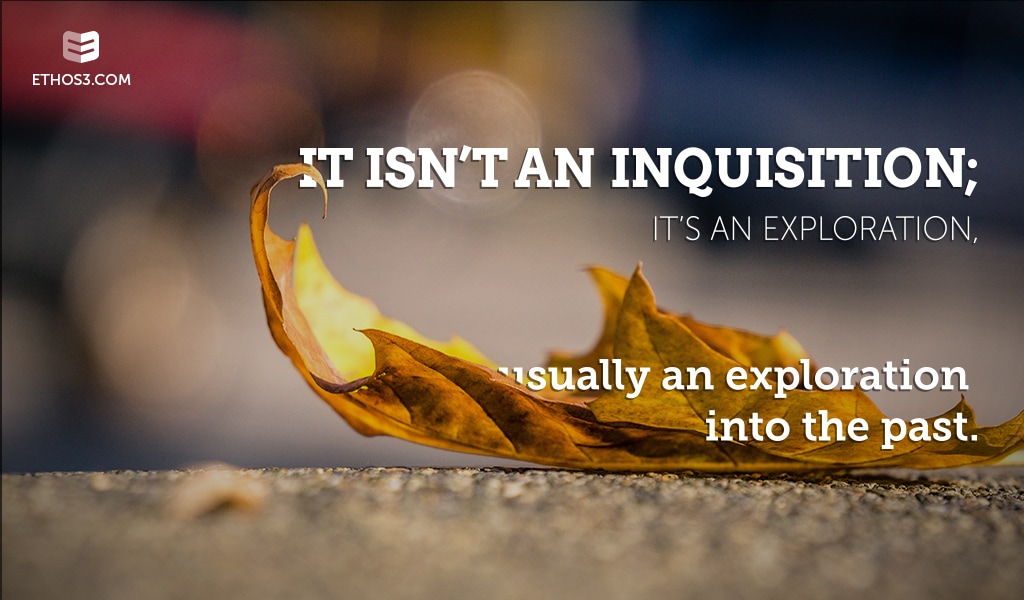Although the author and Pulitzer Prize winner, Studs Terkel, died in the late 2000s, his interviewing style remains a sought-after skill to this day. Studs classified his approach as “guerilla journalism,” which is also known as citizen journalism – the idea that the public should have the opportunity to participate in the knowledge gathering and dissemination process. In his 45 years of broadcasting, Studs culminated 9000 hours of recorded interviews with a diverse range of people – from Martin Luther King Jr. and George Nakashima to regular, everyday individuals. Below, we have put together a list of 4 quotes from Studs that every presenter can learn valuable public speaking skills from studying:
1. “It’s more of a conversation than an interview.”
Just listen to this 1995 interview Studs conducted with Oliver Sacks and you’ll notice how the radio show host engages the interviewee in constructive dialogue rather than sticking to a bland Q&A format. A presenter should make their presentation more of a conversation than a lecture. Our brains benefit from positive conversations too. When we contribute to a discussion, our brain says “you are having a good time!” and reacts by increasing our level of oxytocin – triggering functions in the prefrontal cortex. According to an article from the Harvard Business Review, people in managerial positions can behave in a positive manner during conversations by demonstrating concern for peers, being honest, participating in conversation, establishing a forward-looking vision, and engaging in tough talks. Throughout his many years on the air, Studs injected himself into the interview, while also giving the guest a platform to deliver their message in almost any way they wanted.

Presentation Tips:
Throughout the course of a presentation, the presenter can gain trust by being truthful. In a conversation about the past failures of a product, avoid ignoring the topic. Instead, tackle the hard subject matter with honesty. Why did the product fail? But also, how did you find the solution and make progress after the failure? It’s a challenge and an opportunity all rolled into one unique experience.
2. “It isn’t an inquisition; it’s an exploration, usually an exploration into the past.”
Throughout the life of Ethos3, many decks have come across our computer screens. And we’ve seen many a slide that answered questions that the target audience for the content would probably not ever ask. In other words, the company or organization involved in the presentation production process focused on the thoughts and opinions of individuals within the company instead of obtaining a better understanding of the angle an outsider would hold on a topic. So, a presenter’s best recourse would be to approach a presentation as an exploration. Put in the extra iota of effort to engage in activities which allow you to dive deeper into the thoughts of your target audience.

Presentation Tips:
In instances where you would normally place emphasis on how the company or organization developed a product or service or on how the company or organization’s product or service helps the individuals, research and present from a different perspective. Read product or service reviews on your website; scroll through comments on your Facebook or Twitter pages; and conduct research through the lens of the customer or consumer.
3. “I don’t have to stay curious, I am curious, about all of it, all the time.”
The more interested you are in your presentation topic, the more likely you will be to introduce a new concept or idea and to provide valuable, supportive points. Furthermore, curiosity in a presenter allows him or her to cake on an additional layer of icing to the cake that is your ultimate message – sweetening the taste as you transport bites from your mouth to your audience’s ears. Curiosity can take many forms in the presenter’s world. For example, a presenter has to be curious about not only their content, but also their audience’s perspectives and input.

Presentation Tips:
To display curiosity during your presentation, consider creating a leave-behind one-pager with the most important information from the talk, in addition to a link to a survey where your audience can provide feedback on your performance. By doing this, you demonstrate interest in what individuals learned and how they felt about the overall presentation. At a more personal level, a presenter can successfully pique their own curiosity by constantly updating their presentations – approaching the narrative from interesting angles, editing the content based on varied target audiences, and keeping on trend with design components of the deck.
4. “When you become part of something, in some way you count.”
A recent study conducted by the Stanford psychology department experimented with the concept of teamwork and its relation to motivation. In one of the experiments, participants worked on a puzzle alone; however, the people who perceived themselves as working with others were engaged in that task 48% longer than the rest. The moral of the story? Create opportunities for instituting a collective spirit within your presentation structure.

Presentation Tips:
A presenter can make audience members feel like they are a part of something bigger than themselves by using the third person to convey a feeling of collaboration. For example, instead of saying “You can change lives today!” say “Let’s change lives today!” This makes it seem like the group will band together to achieve the vision you set out in your presentation – shifting the emphasis from individual work to a joint effort. Also attempt using persuasive words like “because” to let the audience know why they should become a part of the something you are introducing or explaining to them. What value does your product or service add to their lives, and the lives of others?
Conclusion
As truly timeless and as increasingly relevant as the quotes described above are to any presenter, there’s something to be said about the way he carried himself in the course of an interview. In a conversation with a representative of the Institute of International Studies at UC Berkeley, Studs responded to the first question by saying: “I’m ninety-one. I was born in 1912. The year the Titanic went down, I came up.” At first read, you might think this statement is simple, not too noteworthy. But once your brain processes the literary gold in those 16 words, the impact increases significantly. You will remember when Studs was born because he attached it to an event mostly everyone will recognize. Concoct a storytelling narrative for an upcoming presentation and channel your inner Studs Terkel. For more tips from some of the world’s presentation and public speaking greats from the past and present, check out the resources included below:
Studs Terkel: The world’s greatest interviewer
3 Lessons from Chimamanda Ngozi Adichie’s “The Danger of a Single Story”
